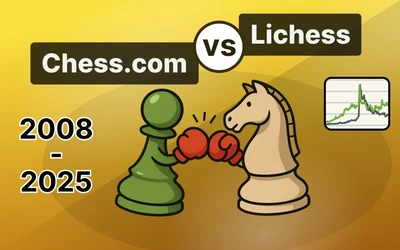
Useful Tips for Beginners and Intermediates in Middlegame and Endgame
Developed, castled, controlled the center... then came the big question: Now what? Check this post to learn what to do next ...Hi there!
First, I have to say... what the heck! It’s already summer in Madrid, we jumped straight from winter to summer with no pause in between!
Anyway, today I thought I’d write a post that can help beginners and intermediate players navigate one of the trickiest parts of the game: The Middlegame!
Very often, when I start working with a new student rated under 1200, they tell me their biggest struggle is not knowing what to do after the opening. Most of them say something like:
“I managed to start well ... I develop my pieces properly, castle my king safely, and place my rooks in the center.... but then I think... ‘Now what? How do I continue?’”
And honestly, that’s normal. There’s no quick fix or simple answer, learning how to handle the middlegame takes time and experience. But what I try to do with my students is help them feel more confident by sharing mini-plans and practical tips that can guide them as they improve.
So, if you’re still reading, it probably means you’ve faced the same question, and that’s exactly why I’ve written this post. Today, I’m sharing some helpful tips to guide you through what to do once the opening is over and the real battle begins: the middlegame. (Some of these tips can also be useful in the endgame, but if you're curious about that, I already did a full post on endgame tips, which you can check out here:fla2021's Blog • Endgame Tips That Might Change Your Life...Or Not! • lichess.org)
As I mentioned, these tips are meant to help you organize your thoughts and improve your play. Of course, truly mastering planning takes time and effort, but in the meantime, these ideas can give you a great starting point.
For each tip, I’ll share examples so you can see how to apply the ideas in real games, let's start with them:
Activate your least active piece
Eliminate your opponent's most active piece
Control the center
Break your opponent's pawn structure
Eliminate your opponent's key defenders
Exchange queens to transition into a favorable endgame
Create threats to make your opponent react
Place your rooks on open files to activate them
Seek tactics like forks, pins, and skewers for advantage
I hope these tips offer you a better understanding of what to do in the middle game. But as I said, relax and enjoy the learning process. The middlegame phase takes time (and sometimes even a little blood!) to master.
If you try any of these tips, or have your own to share, drop a comment and let me know if you enjoyed this post!
Let’s keep learning together. See you around, and I wish you a lot of checkmates!
You may also like
 CM HGabor
CM HGaborHow titled players lie to you
This post is a word of warning for the average club player. As the chess world is becoming increasin… MeTooSlow
MeTooSlowIs this the end or the beginning?
I never thought I’d be writing this. But here we are—Magnus Carlsen, the undisputed king of modern c… WFM fla2021
WFM fla2021The Greek Gift sacrifice: good sacrifices and bad sacrifices
In this post we will discuss he famous Bishop Sacrifice on h7, a classic attacking pattern! ChessMonitor_Stats
ChessMonitor_StatsWhere do Grandmasters play Chess? - Lichess vs. Chess.com
This is the first large-scale analysis of Grandmaster activity across Chess.com and Lichess from 200… WFM fla2021
WFM fla2021Endgame Tips That Might Change Your Life...Or Not!
In this post you will find some important tips to improve your endgames without having to study that… WFM fla2021
WFM fla2021